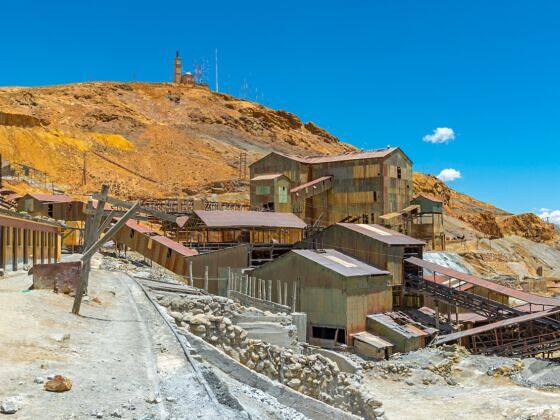“We’re going to make a bomba. A very good bomba.”
Pedro plays to the crowd, throwing the dynamite around before explaining it isn’t explosive by itself. Opening up the paper wrapping, he exposes the soft grey stick, cracking it into pieces before adding the starter and placing it in the carefully cradled bag of little white beads — ammonium nitrate — in his lap. Finally he ties it tightly around a two-foot-long fuse. Once lit, he pretends to smoke it, posing for pictures and taking his time to walk across the dry, lumpy landscape where he plants the explosive in the dirt.
